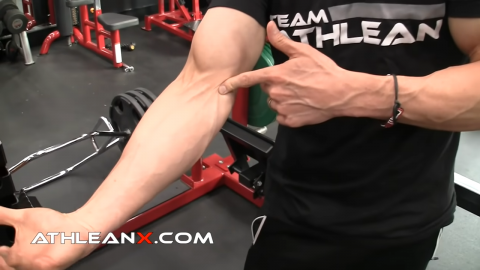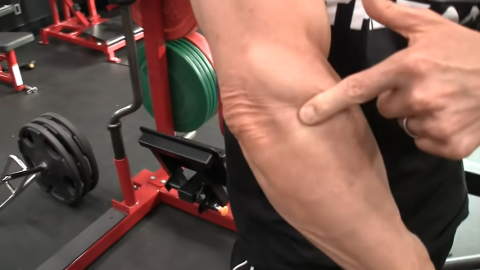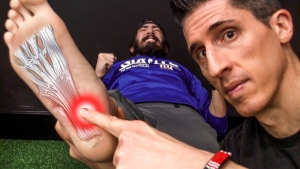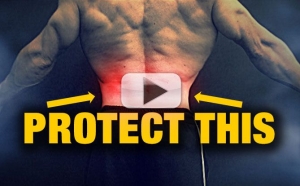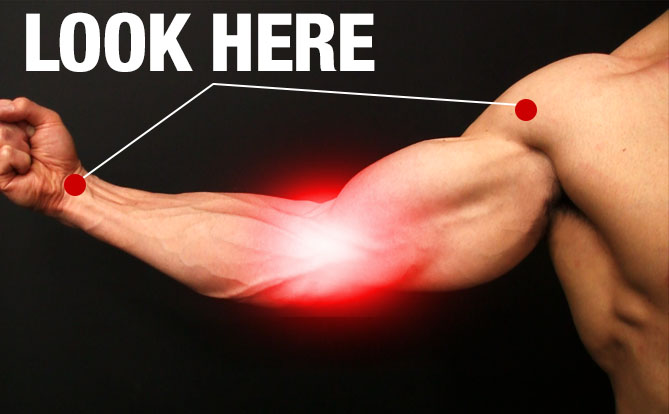
HOW TO FIX ELBOW PAIN
What do golfers, tennis players, and weight lifters all have in common? Elbow pain.
You’ve heard of tennis elbow, and probably also golfer’s elbow.
Elbow pain is very common to those sports, and any sport that requires repetitive motions. So, it’s also a common side effect of weightlifting. Even as you read this, your own elbows may be hurting.
Any movement that you do all the time and under load, whether it’s biceps curls, seated triceps extensions, or swinging a tennis racquet, can lead to elbow pain. Light weights, heavy weights…it doesn’t matter. Repeating the same motion over and over can lead to injuries if the surrounding tissues aren’t conditioned.
Let’s have a look at where elbow pain can occur, what the true causes can be, and most importantly, how you can fix it!
WHAT CAUSES ELBOW PAIN?
The elbow pain we most often think about is inflammation of the tendons around the elbows, either on the inside or outside of the elbow. (We’re not talking about bone spurs or fractures.)
Pain on the inside of the elbow is medial epicondylitis, a common condition called golfer’s elbow.
Pain on the outside of the elbow is lateral epicondylitis, also known as tennis elbow.
Both tennis elbow and golfer’s elbow can be pretty debilitating when you try to grip a bar.
You can get either of these injuries to the connective tissue around the elbows from any activity that requires the repeating the same motion over and over. Since repetitive movements are exactly what we do to build muscle, it makes sense to do something to prevent these conditions.
We sometimes don’t pay enough attention to the arm muscles that control, command, and that prevent elbow pain from occurring in the first place.

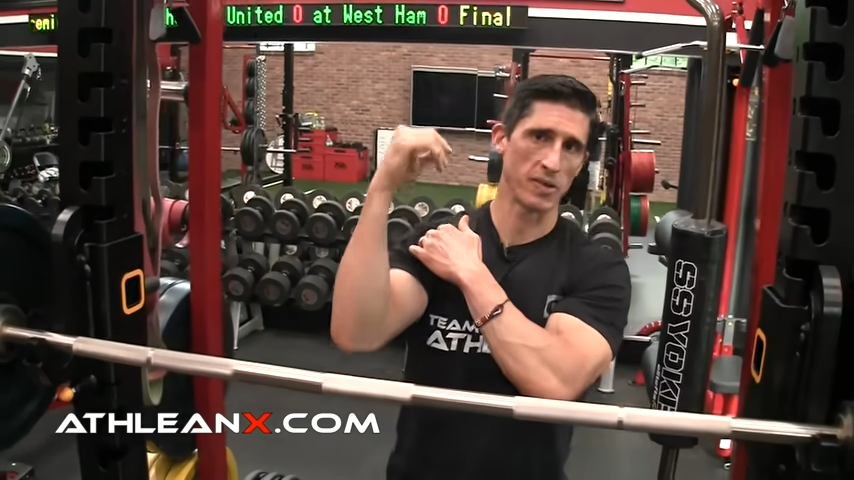
The real problem isn’t with the elbow joint. The elbow joint is a hinge joint that’s dependent on the joints below and above it–the wrist and the shoulder–just like the knee is dependent on what’s going on with the ankle and hip.
The knee is also a hinge joint, so if the ankle is jacked up, then the knee can get twisted and turn in weird ways. And, if the hip is weak, it can affect the knee and create a lot of torque and knee pain.

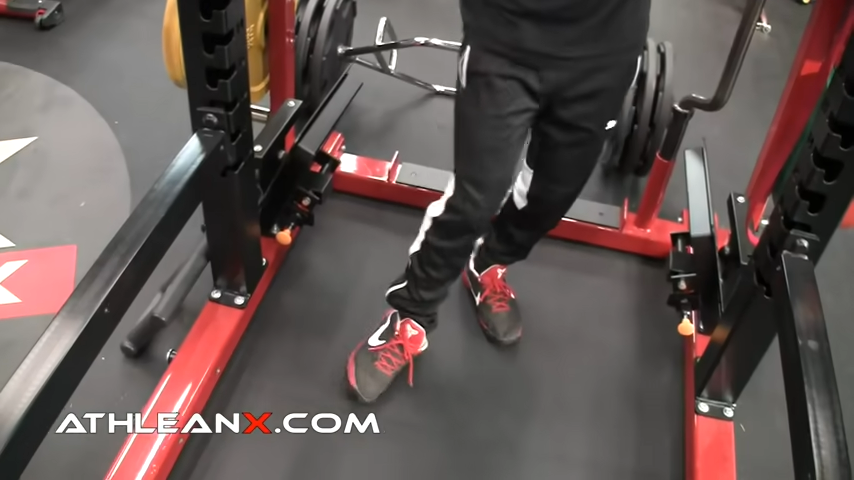
A WORD OF CAUTION
The exercise I’m showing here is preventative. If you already have a case of tennis elbow or golfer’s elbow, you need to heal before you begin these exercises. Conservative treatment, including ice packs and rest, will help. If the condition is really severe, seek help from a medical professional, who may recommend treatments like anti-inflammatory meds (NSAIDs) or steroid injections (meaning cortisone injection, not anabolic steroids). A repetitive strain injury like tendinosis comes from repetitive movements, like the compound movements we do in the gym. Doing more before you heal is only going to make matters worse and lead to serious damage over time. Laying off the weights requires patience, but it’s better than constant injury that could sideline you for weeks or even months.
DO THIS EXERCISE TO PREVENT ELBOW PAIN
This simple exercise is going to help prevent elbow pain by strengthening and stabilizing the wrist, forearm, and shoulder. It’s easy to do and doesn’t take much time.
You’ll need a bar that you can position at chest height. A Smith machine works great for this.
Stand at arm’s length from the bar and recline your body slightly.
Start by grasping the bar with two hands. Get yourself in a slightly reclined position with your feet flat on the floor.
Now, with your shoulders completely level, squared up and parallel to the bar, place one of your hands in the middle of the bar and release the other with your arm at full extension.

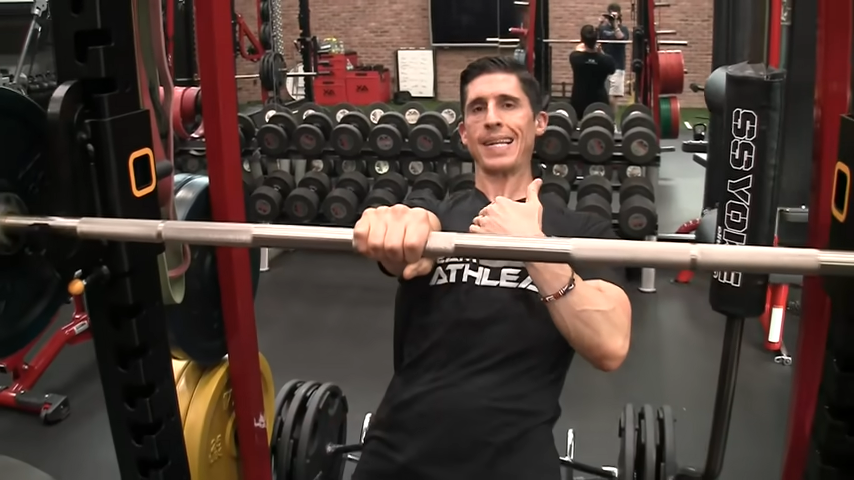
Work hard to prevent your torso from dropping even a millimeter to the side of the free hand. Your body will want to do that, especially if you are lacking stability through the wrist and or shoulder on the working side.
Hold this for about 45 to 60 seconds.
You’ll be working the flexors in your forearm simultaneously with your shoulders to improve your grip, forearm, and wrist stability.
Switch hands and work the other side. Remember, no dropping the shoulder. See if you can hold this with each side for up to one minute without moving.
PROGRESSING THE EXERCISE: WIDEN YOUR GRIP
The wider your hand is and the lower you recline under the bar, the more challenging this becomes. It gets easier when you put your hand nearer the center and the less you recline.
Once that center grip gets easy, progress the exercise by widening your grip so that the hand gripping the bar is more in line with your shoulder than the center of the bar. This makes the challenge of keeping your torso parallel much more difficult.

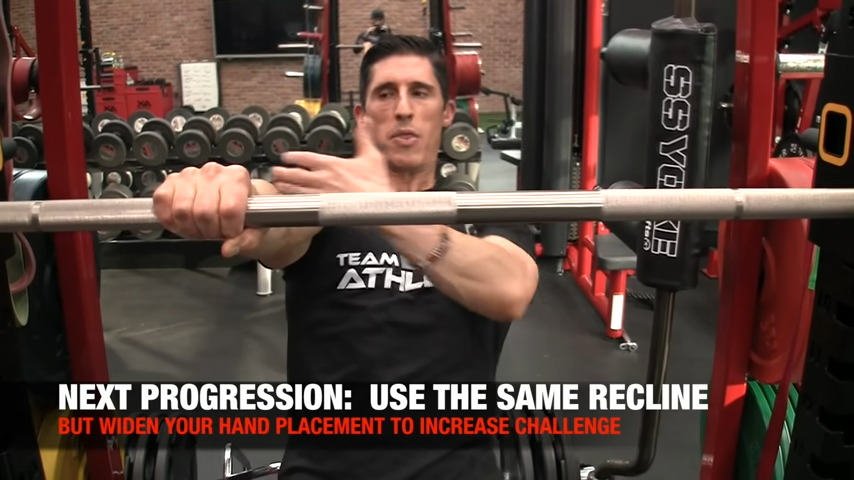
You can see that the weight is now more displaced to one side with more tendency to fall or sag to the side, and you’ll have to work even harder to hold the grip and keep your shoulders level. Keeping the torso level will still be a challenge.
Use this wider grip for 60 seconds.
SECOND PROGRESSION: LOWER YOUR BODY
When you master the exercise at each hand position, lower your body by reclining farther under the bar.
The more you recline, the more you’ll have to fight gravity.
Now that you’re at a steeper recline, start by moving the hand back to the center. Like before, hold one side, then switch hands, remembering to keep your shoulders level.


FINAL PROGRESSION: GO DYNAMIC
The final progression is to go dynamic by switching hands while you’re reclined without a single inch of drop.
Hold the bar and switch hands without repositioning your body. Try for 10 hand switches.


BONUS GRIP WORK
Instead of just sitting around between sets doing nothing (or checking your phone), you can work on your grip strength.
I practice grip strength exercises all the time, regardless of what workout I’m doing. I do the exercise I just described and even more challenging ones like hanging from a pull-up bar with one arm.

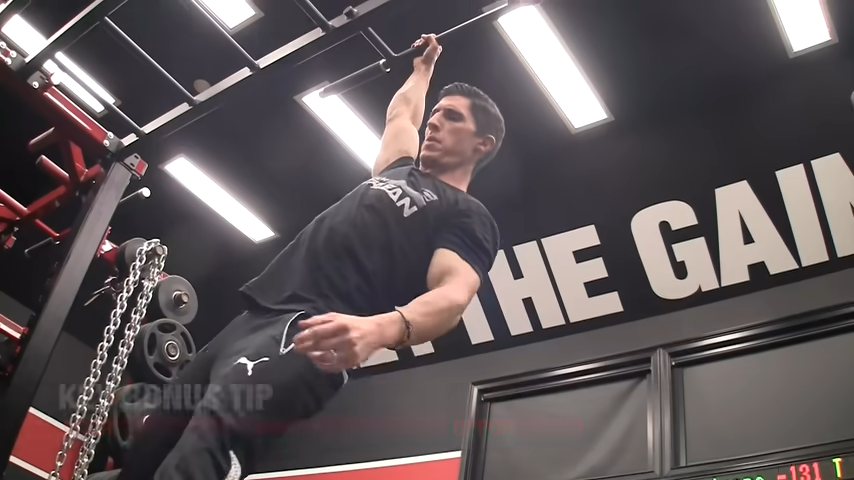
I especially like working my grip strength between ab work.
Improved grip strength has led to a lot of other lifts being stronger, especially the deadlift.
If you have issues with your shoulder this could be a challenge at first, but it’s been helping me get over my own labrum issues. I’ve been getting stronger, stabilizing my shoulder, and preventing that destabilization that comes from having a torn labrum.
FOCUS ON THE FOREARMS
Remember guys, the key to fixing elbow pain lies in the shoulder, wrist, and forearms.
Prioritizing forearm and grip strength is imperative to protecting your elbows.
If you are lacking strength and stability in the shoulder, wrist, and surrounding arm muscles you can almost guarantee pain in the elbows. Fix that by simply adding this one exercise to your routine 3-5 times per week at the level of challenge that is appropriate for you.
Do this for a few weeks and you’ll see your grip strength improve.
If your elbows have been in chronic pain for a while, seek medical attention first so that you can return to normal activity and not invite more damage over time.
But if your elbow pain is just starting or isn’t too severe, give this one simple exercise a try. You’ll be surprised by how much it will help!
If you’re looking for the best training programs to help you become as strong, athletic and functional as you’ve always wanted to be, check out our ATHLEAN-X programs.

- Elbow pain is a common condition caused by repetitive movements like weightlifting, swinging a golf club or tennis racquet. Tennis elbow and golfer’s elbow are common overuse injuries.
- The elbows are hinge joints, like the knees, and are affected by the strength and alignment of the joints above and below them.
- A single exercise that combines grip strength with wrist and shoulder alignment can help prevent golfer’s elbow or tennis elbow (medial or lateral epicondylitis).
- Start with a bar at chest height, grip near the center of the bar and let go with one hand, keeping the contralateral shoulder level with the shoulder of the gripping arm.
- Progress the exercise by widening the grip first, and then reclining farther under the bar to increase the force of gravity.
- Hang for 45 to 60 seconds with each arm.
- Do these exercises 3-5 times per week. You can work them in between sets of other exercises you’re doing in your workout.
- This exercise is preventative. If you’re already experiencing elbow tendon issues, conservative treatment like ice packs, rest, NSAIDs, can help. If they don’t, speak with a medical professional. More invasive treatments like steroid injections may be required before you can attempt these exercises. Always seek medical attention if you think you have an acute injury to bone, ligaments, nerve, or other connective tissues.

Jeff Cavaliere M.S.P.T, CSCS
Jeff Cavaliere is a Physical Therapist, Strength Coach and creator of the ATHLEAN-X Training Programs and ATHLEAN-Rx Supplements. He has a Masters in Physical Therapy (MSPT) and has worked as Head Physical Therapist for the New York Mets, as well as training many elite professional athletes in Major League Baseball, NFL, MMA and professional wrestling. His programs produce “next level” achievements in muscle size, strength and performance for professional athletes and anyone looking to build a muscular athletic physique.

















